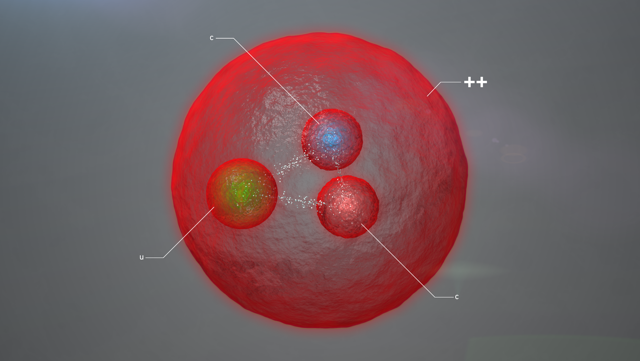Large Hadron Collider: CERN scientists detect 'charming' new particle heavier than proton
Scientists hope the discovery of the new particle would help them investigate further the theory of the 'strong force'.

CERN scientists have just discovered a new "charming" subatomic particle, which they believe may help further our understanding of one of the four forces holding the universe together. Physicists working with the Large Hadron Collider (LHC) announced that they've found a long theorised particle, heavier than a proton. They are calling it the Xi-cc++ particle.
The new particle is a type of baryon and contains "two charm quarks and one up quark." Baryons make up the most matter, including protons and neutrons and are in essence triplets of smaller elementary particles called quarks. The new particle is four times heavier than a proton and the physicists are very excited about the discovery as it is the first time that the existence of such a particle has been confirmed.
"The existence of this particle from the baryon family was expected by current theories, but physicists have been looking for such baryons with two heavy quarks for many years. It is the first time that such a particle has been unambiguously detected," CERN said in a statement.
"Finding a doubly heavy-quark baryon is of great interest as it will provide a unique tool to further probe quantum chromodynamics, the theory that describes the strong interaction, one of the four fundamental forces," said Giovanni Passaleva, new Spokesperson of the LHCb collaboration. "Such particles will thus help us improve the predictive power of our theories."
"In contrast to other baryons, in which the three quarks perform an elaborate dance around each other, a doubly heavy baryon is expected to act like a planetary system, where the two heavy quarks play the role of heavy stars orbiting one around the other, with the lighter quark orbiting around this binary system," added Guy Wilkinson, former Spokesperson of the collaboration.
Scientists hope that the discovery of the new particle can help them investigate further the theory of the "strong force". In other words, this is the nature of the interaction between particles – essentially one of the basic forces of nature binding all matter and by extension, the universe together.
© Copyright IBTimes 2025. All rights reserved.






















